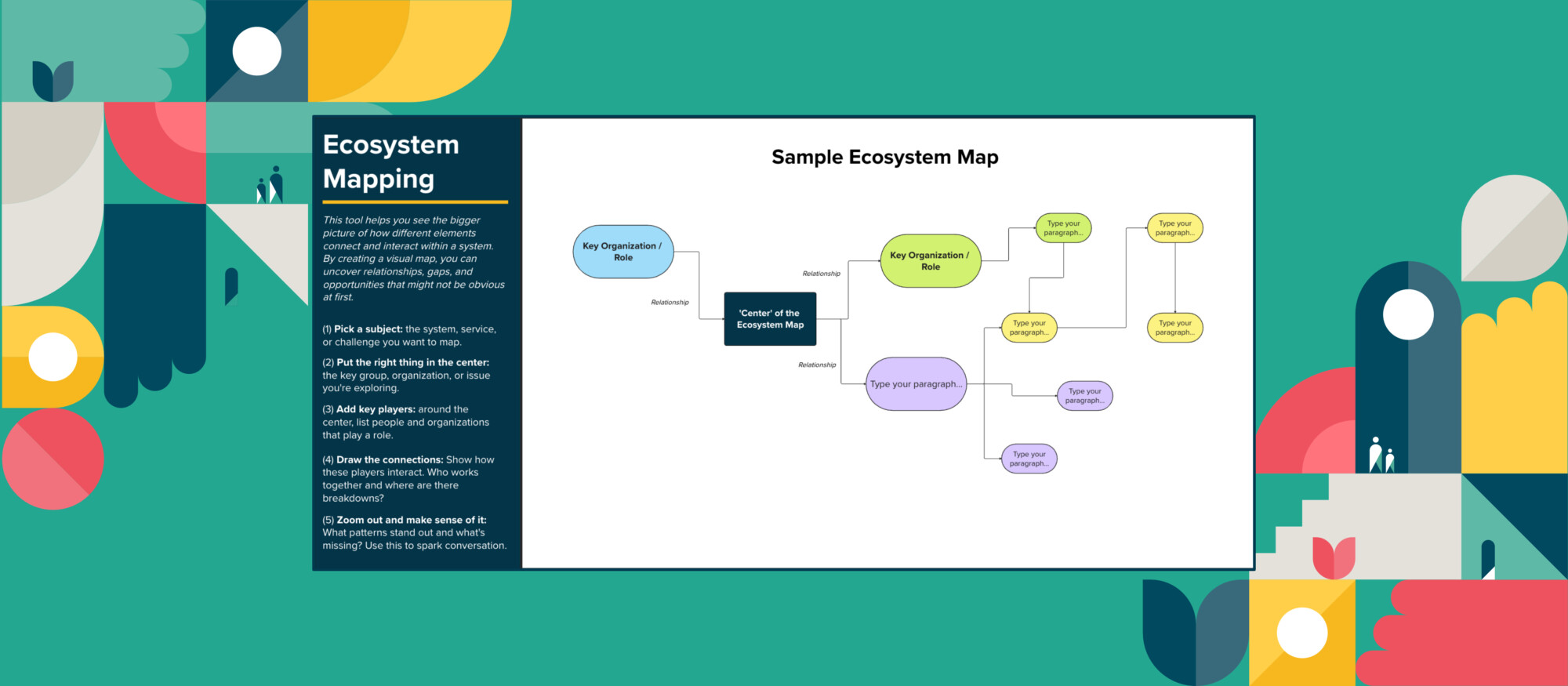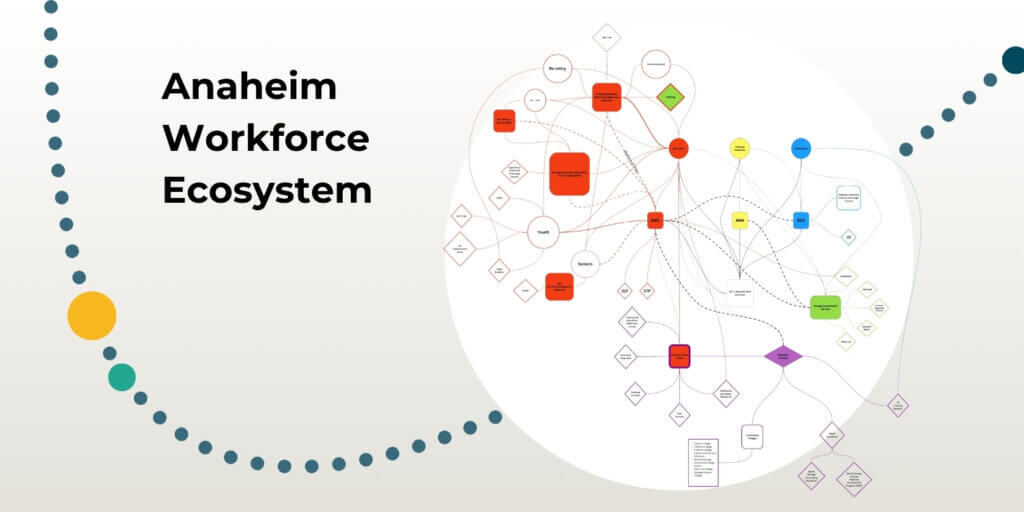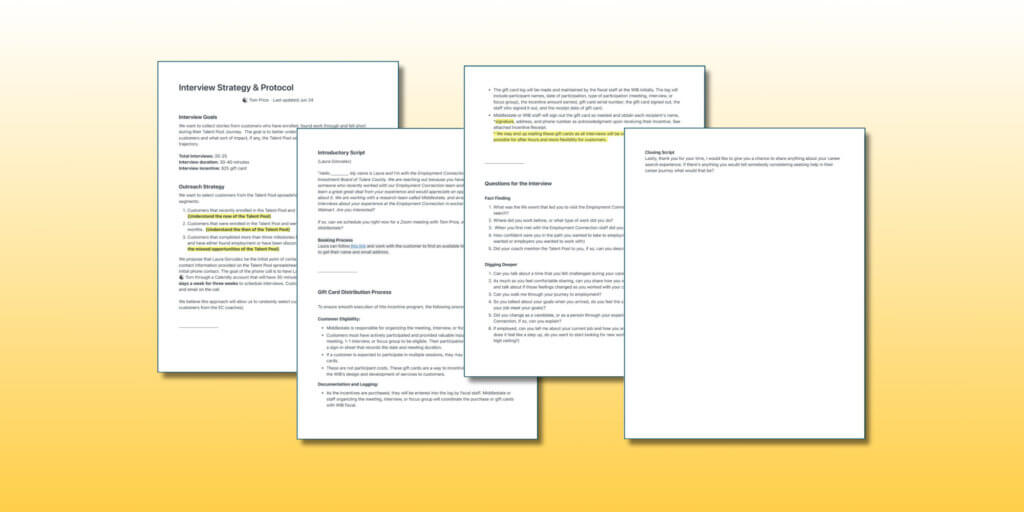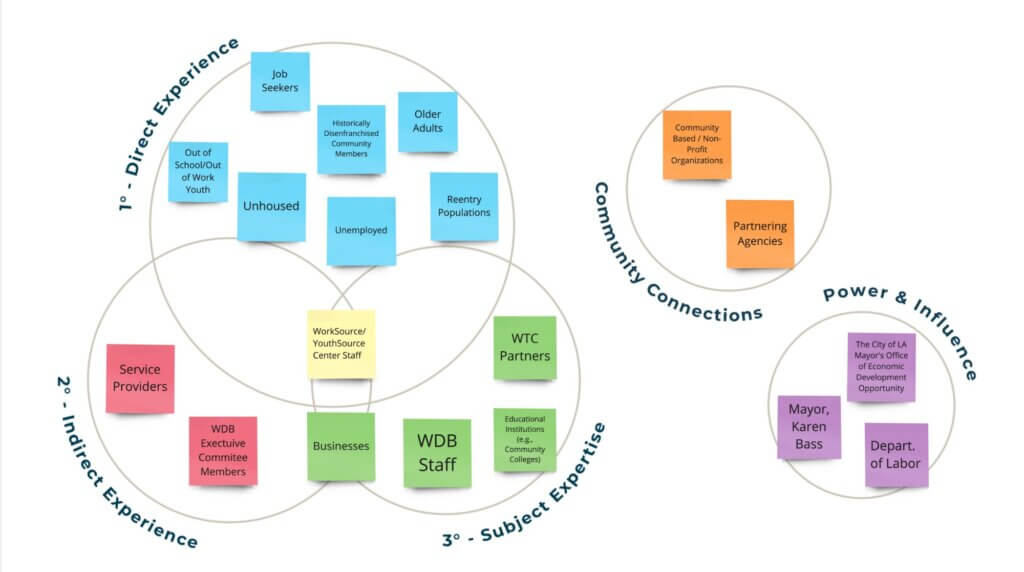Ecosystem Mapping

What is Ecosystem Mapping?
Ecosystem mapping helps you see the bigger picture of how different elements – like people, groups, and services – connect and interact within a system. By creating a visual map, you can uncover relationships, gaps, and opportunities that might not be obvious at first.
How it’s Helpful
- Clarifies complexity – Breaks down how different players in a system connect.
- Reveals gaps & opportunities – Helps spot missing links, service gaps, barriers, and ways to better coordinate.
- Builds shared understanding – Aligns teams by creating a clear, visual representation of the system.
When to Use It
Use ecosystem mapping when you’re exploring a new problem space (i.e., a new benefits program), trying to understand how different players and factors interact, or looking for ways to improve a process, service, or experience.
Steps to Create an Ecosystem Map
- Pick your subject. What system or challenge are you trying to understand?
- Put the right thing in the center. The center of your map should be the key group, organization, or issue you’re exploring.
- Add key players. Around the center, list the people and organizations that play a role, like:
- People: Job seekers, benefits program participants, policymakers, etc.
- Organizations: Training providers, nonprofits, government agencies, etc.
- Funders & decision-makers: Local government, state agencies, foundations, etc.
- Draw the connections. Show how these players interact. Think about:
- Who works together? (i.e., agencies referring people to each other)
- Where do power and funding flow? (i.e., foundation supporting programs)
- Where are the breakdowns? (i.e., when job seekers fall through the cracks)
- Zoom out and make sense of it. Look at your map—what patterns stand out? Are there missing links or areas where better coordination could help? Use it to spark discussion and adjust as needed.
Tips & Considerations
- Start simple. You don’t need to capture everything at once—begin with the big pieces.
- Bring others in. People working in the system have valuable insights—co-create when possible.
- Make it visual. Sticky notes, a whiteboard, or a digital tool (like a MURAL template) can help make connections clearer.
- Use it as a conversation tool. It’s not just for documentation—it should help drive action.
- Review some examples. Check out how others, like a fellow at the Anaheim Workforce Development Board, made and used ecosystem maps.
Licensing
 This work by CivicMakers, LLC is licensed under a Creative Commons Attribution-NonCommercial 4.0 International License.
This work by CivicMakers, LLC is licensed under a Creative Commons Attribution-NonCommercial 4.0 International License.
This license allows reusers to distribute, remix, adapt, and build upon the material in any medium or format for noncommercial purposes only, and only so long as attribution is given to the creator.



